In the first part of this series we brought you some images that defined the year 2012. The images shot by ace Reuters photographers tell a gripping story.
Part 1: The most INCREDIBLE moments of 2012
In the second part of our series, we bring you images from Nepal, Canada, Jerusalem, Gaza and other parts of the world. These photographs are accompanied with a short description by the photographers on why they shot the picture and the story behind the picture.
Click NEXT to go through the slideshow...
In PHOTOS: The most INCREDIBLE moments of 2012
Photographs: Navesh Chitrakar,Nepal/Reuters
"The very first picture I took for this series was the deceased body of Tara Sharma Phuyal lying on her hospital bed where she took her last breath after giving birth to her baby girl. One of the family members who was protesting led me to Tara's husband who was lying on the bed in the same hospital. When I queried what happened to him, I was told after hearing the news of his wife's death he went into shock, lost consciousness and had to be admitted to the hospital.
I felt really sad for Khilnath and his newly born daughter. This could have been the happiest day in their life but it was not. I was told by angry family members who were protesting that Tara died because of the hospital's carelessness, that she died because of excessive bleeding and while she was screaming on her bed the staff didn't react despite her frequent calls for help.
I was shocked and really touched by what I heard. All the time I was thinking about the baby girl and Khilnath Phuyal who is a teacher by profession. I called one of the family members later and received the number of Khilnath but he had left Kathmandu for the cremation of his wife. I was told he would be back after 13 days from his village. I waited and called him after the 13 days. His voice sounded very weak. I asked him about his baby girl. He told me she was still in the hospital and he was confused about what to do. I realized then how important a mother is for a newborn baby.
I still have not finished with this story. I don't know the end of the story but I hope these pictures bring some improvement to maternity health, especially in Nepal where it is desperately needed."
Click NEXT to see more PHOTOS...
In PHOTOS: The most INCREDIBLE moments of 2012
Photographs: Andy Clark, Canada/Reuters
"It was just after sunset and besides the constant and deafening roar of revving engines it was a perfect warm summer's evening in the rural Fraser Valley of British Columbia. The din of unmuffled engines was all part of a photo story I was working on at a local stock car racetrack during their popular Saturday Night at the Races. While cautiously making my way through several cars lining up for the next race, I took a quick look over my shoulder to make sure the coast was clear behind me then turned back preparing for a picture I wanted.
Wait a minute! And I quickly looked back again. There, seemingly out of nowhere, stood a Princess. In a flowing turquoise gown and a tiara on her head, there stood a young lady waiting to cross the pit lane. It was an unusual sight to say the least, considering the surroundings. I took a few photos of the Princess standing all alone then had to scamper out of the way as a mean sounding stock car moved in my direction on its way onto the course. I later learned the young lady was the evening's presenter of trophies to the winning drivers and had decided to dress in regal fashion as part of her duties."
Click NEXT to see more PHOTOS...
In PHOTOS: The most INCREDIBLE moments of 2012
Photographs: China Daily/Reuters
"The accident happened in Shuangxi, Fujian province, when the steel bars accidentally broke and popped out from a machine, piercing the worker's body. The worker was sent to a hospital in Hangzhou, as the operation could not be done at a local hospital. The surgery started around nine hours after the accident and after more than five hours of surgery, was a success.
This photo was taken during the first phase of the operation, to shorten the steel bars, as the firefighter advised on how to dissect them. Co-workers helped to hold the bars with pliers and used a steel carving machine under the supervision of doctors. The doctors and medical staff provided medicine to the worker and used salt water to lower the temperature of the steel bars. After the bars were shortened, the worker was moved to an operating room where the remaining pieces were removed from his body."
Click NEXT to see more PHOTOS...
In PHOTOS: The most INCREDIBLE moments of 2012
Photographs: Ueslei Marcelino, Brazil/Reuters
"Indian matters in my country are always a constant subject in the media, with the majority of the news being about conflict over land ownership and Indian rights within the law. I always thought that the majority of Brazilian Indians had a strong desire to be integrated into urban society, watch TV, movies, drink cold water, and use cell phones. But after coexisting with Yawalapiti Indians for a few days I realised that this wasn't the case. When I reached the village a cacique named Aritana immediately authorized me to photograph their village, but I soon realized that I also had to convince the rest of the tribe. I spent the first day just trying to become one more of the community, and getting to understand how they lived, what they did, and how they were organized.
I suffered the anguish of missing wonderful images because I knew that first I had to gain their confidence without the aggression of photographing. I had to show them that I knew the difference between intimacy and privacy. In that way many of them understood that I was a friend, and not an intruder. I did make friends and conversed with some to try and understand them better. I earned the nickname of Banana, for the bunches of bananas that I carried with me to their village. I also gained the confidence of many children, who followed me wherever I went. They loved to play in the trees, and during the hottest time of the day they played in the nearby river."
Click NEXT to see more PHOTOS...
In PHOTOS: The most INCREDIBLE moments of 2012
Photographs: Yannis Behrakis, Greece/Reuters
"I was photographing the Greek section of a worldwide project on the 'Jobless generation'. Through a colleague I found Manolis Ouranos, a young Athenian who had studied civil engineering but ended up working as a cook in a small tavern. Manolis was wandering around the tavern clearly nervous about the presence of my cameras. At some point I had asked him to show me his work area, the light came from a window on the side of the super small kitchen. Manolis seemed comfortable but at the same time pensive, this was the decisive moment."
Click NEXT to see more PHOTOS...
In PHOTOS: The most INCREDIBLE moments of 2012
Photographs: Ammar Awad, Jerusalem/Reuters
"This was taken during a rally marking 'Land Day' in East Jerusalem. Each year there are rallies across Israel and the Palestinian Territories marking "Land Day," which commemorates the killing by Israeli security forces of six Arabs in 1976 during protests against government plans to confiscate land in northern Israel's Galilee region.
The protesters began throwing stones toward Israeli police on the scene. Police forces responded with tear gas and pepper spray. The man in the picture was sprayed with pepper spray and then detained."
Click NEXT to see more PHOTOS...
In PHOTOS: The most INCREDIBLE moments of 2012
Photographs: Lucas Jackson, United States/Reuters
"When covering a disaster I find that my best work comes not from running all over the place looking for things but finding a situation that will visually explain the context and waiting for the characters or subjects who are involved to begin interacting with either each other or with the scene itself. In this case I had been talking with the subject for quite a while about what the flood had done to both her home and her business.
We walked around the property and she showed me the incredible amount of water that had accumulated there. It had flooded enough to float the white limousine in the background on top of another car from over a block away. As we walked back towards the front of her home she noticed that her neighbor had pulled up across the street and she raced to embrace him as they had not seen each other since the storm.
I rushed to capture that photograph but it lacked the context that the background offered in this image of her reaction following that embrace. The subject was overwhelmed by both the despair at her losses and the joy of knowing her neighbor was safe."
Click NEXT to see more PHOTOS...
In PHOTOS: The most INCREDIBLE moments of 2012
Photographs: Eduardo Munoz, United States/Reuters
"After working during the day to document the impact of superstorm Sandy on folks from Manhattan, we decided to go early in the morning to try and catch a good skyline photo of Manhattan as soon as the storm left the area, weather conditions permitting. It was impossible to sleep that night, not because of the assignment itself but because the winds strongly hit the roof of my small room throughout the night.
At 6am I decided to go out. I went with my colleague Kena to the Hudson River waterfront walkway where you can see the huge Financial Center in Manhattan. That morning, you could feel the passing of something really huge in the Big Apple, something that the media had dubbed "FRANKENSTORM"."
Click NEXT to see more PHOTOS...
In PHOTOS: The most INCREDIBLE moments of 2012
Photographs: Mohamed Al-sayaghi, Yemen/Reuters
"I was following the story on child hunger, and went more than once over the course of a few days, to a therapeutic feeding center at al-Sabyeen hospital in Sanaa where children who suffered from malnutrition were being treated, but I did not find good pictures.
On this day while I was wandering in the corridors of the hospital, I noticed the mother of this child, nine-month-old Mohammed Saleh al-Ayadi, sitting in the emergency lounge. Her baby had signs of acute malnutrition clearly evident on his body. I had a feeling that this was the image that I had been searching for."
Click NEXT to see more PHOTOS...
In PHOTOS: The most INCREDIBLE moments of 2012
Photographs: Baz Ratner, Israel/Reuters
"This picture was taken during a two week project I did for Reuters about the conditions of African migrants in Israel. There are about 70,000 Africans leaving in Israel, some are considered job seekers and some refugees.
In recent years the Israeli government has been trying to fight their growing numbers by building a fence on its border with Egypt and conducting high-profile deportations. This image was taken at Levinsky Park in south Tel Aviv, which is known as a center for African migrants, where hundreds of them sleep, eat and look for work."
...
In PHOTOS: The most INCREDIBLE moments of 2012
Photographs: Mukesh Gupta, Kashmir/Reuters
"As it was raining heavily, I was out to get some weather standalone pictures and in between I got a call from my friend about the Tawi River getting flooded and about a temple that was partially submerged. So, without wasting any time I went to shoot the flooded temple during heavy rains in Jammu."
Click NEXT to see more PHOTOS...
In PHOTOS: The most INCREDIBLE moments of 2012
Photographs: Goran Tomasevic, Syria/Reuters
"The Free Syrian Army is organised and knows what they are doing. Some members are former Syrian soldiers who defected but most are young civilians, some are 16 or 17 years old. They are fighting the Syrian Army with small arms and RPGs and without many supplies but somehow they set up a supply line to get fuel for their vehicles. They are also media friendly. At first they noticed my presence and were a little bit suspicious but after a while they began saying "Goran come here", though they didn't really speak English. They would tell me what missions they were conducting or show me some positions and ask if I wanted to join them.
On this day we were just talking on the street when we heard shooting and started running into the building. We heard a large explosion and that is when the rebel was hit by shrapnel. He and others entered the room and I was in a little bit of shock and took some out of focus pictures. It was such a small room with not much light that I had to push the camera up to 3000 ISO. I couldn't see much because there was a lot of smoke. It was really difficult technically to take these pictures. Beside the rebel there is a knife on the floor as people had just been eating lunch in the room."
Click NEXT to see more PHOTOS...
In PHOTOS: The most INCREDIBLE moments of 2012
Photographs: Ricardo Moraes, Brazil/Reuters
"In June we had a great mobilisation of different sectors of the society for the Rio+20 United Nations sustainable development summit marking the 20th anniversary of the United Nations Conference on Environment and Development (Rio-92) in Rio de Janeiro. Days before the beginning of the summit, people from different states and many countries started to arrive in Rio, both for the Rio+20 and for its parallel event, the People's Summit at Rio+20 for Social and Environmental Justice.
I started to cover indigenous people at their temporary village, taking pictures of many cultural and religious ceremonies and meetings. As the People's Summit began, I started to look for indigenous people in the city, contrasting their traditional lifestyle with the urban visual. I found many using the subway, maybe the most urban kind of transport, to make their way to the Summit. I saw this picture and it was like the indigenous man had just entered a time machine."
Click NEXT to see more PHOTOS...
In PHOTOS: The most INCREDIBLE moments of 2012
Photographs: Brian Snyder, United States/Reuters
"I spent one day while covering Governor Mitt Romney's presidential campaign doing a 'Day-In-the-Life' look at the candidate. About two-thirds of the way through the day Governor Romney was in a hold area making phone calls, working on a speech and consulting with advisors.
I had left him in a small room to give him a break from my camera, when I noticed that through the activity reflected in a window to the room I could see him as well. Funnily enough, while I was making this photograph with him and the reflection, he motioned me into the room, saying it was no problem for me to be in the room with him; no break needed."
Click NEXT to see more PHOTOS...
In PHOTOS: The most INCREDIBLE moments of 2012
Photographs: Lucas Jackson, United States/Reuters
"This image was taken as the sun set on Election Day in the Rockaways. Located in the Beach 90s the iconic boardwalk was lifted by the storm surge from superstorm Sandy and pushed several hundred feet inland. The water broke and twisted the massive wooden structure and blocked vehicular traffic to the waterfront. As a result the Department of Sanitation demolished these long sections and piled them up on both sides of the street.
In between these towering piles of demolished wood was an alleyway for passersby. This day had been sunny and warm and the sand pushed up by the surge had dried out, creating large dust clouds when vehicles drove the narrow lanes between the piles of debris. I had been photographing along the water and noticed that the dust created a nice layering effect when it was caught just right by the sun. Using that element I photographed for about an hour trying to get all of the elements together in a single frame as people and cars moved along the street.
I had to walk along the street trying to find a spot that gave the best combination of foreground elements to combine with the larger buildings in the background and then wait for people to walk across the street to give the scene a sense of scale. I used a building on the left to shield me from the direct sun and took several dozen photos with different subjects filling the street, but it did not look right until this man walked past me and continued down the center of the street. I feel it is one of the most successful photographs I took during this disaster that visually articulates the scale of destruction and just how strong nature can be."
Click NEXT to see more PHOTOS...
In PHOTOS: The most INCREDIBLE moments of 2012
Photographs: Shamil Zhumatov, Afghanistan/Reuters
"I was embedded with a US platoon holding position at a tiny base of Afghan police. In fact, it was a misnomer to call that a base – a drab building behind an adobe wall pocked with bullet holes after skirmishes. On the first day, it was relatively quiet – a bit of shooting which ceased by the evening. At 0500 next day, all hell broke loose – shooting, a brief lull and then again shooting. A group from our platoon would set off around every 40 minutes to patrol the area from where the shots were fired.
This was not far away – a sparse grove and ruined houses some 100-150 yards away. Sometimes these groups were shot at. But groups changed, while I worked alone. I accompanied a few patrols in the morning and felt knackered by midday. It was sweltering hot already – about +40 Celsius (104 degrees Fahrenheit). So another group took off and I stayed at the base.
They were shot at again, and then it became really scary – one shot, then another, then bursts of machinegun fire and then it all turned into a deafening, unending roar. All of a sudden, an explosion roared. I can recognise explosions, and that one meant nothing good. Almost simultaneously, I heard someone shouting over the radio: "We need a doc!" The medic got ready, clutched his rucksack, I put on my flak jacket and a helmet, someone took a stretcher, and we all sprayed out of our shelter. If you ran straight, it wasn't far – a small field and a shallow gutter.
When we arrived, the first thought that flashed across my mind is – why the heck do we need a doc here? This man is dead! Half a human body was lying in the dust, parts below his waist were missing, and his clothes were gone. Everyone was busy – someone covered us, the medic started making injections, the stretcher was ready. And they kept shouting to the unconscious man: "Hold on! It'll all be OK!" I asked if I can be of any help. I was asked to move away a machinegun.
I gave a bottle of water to a soldier with a light leg wound. The guy drank it and furiously threw the bottle away. I was, meanwhile, taking pictures. I tried to be as discreet as I could. No one tried to stop me. The guy was put on the stretcher and everyone braced up for a dash back. A sergeant slung his rifle across my back, I was asked to carry a mine-detector. And so we dashed back. The guy's arms hang down from the stretcher. Crossing the gutter knee-deep in muddy water, they shouted "raise his hands!" I took his left hand – it was warm but strangely light, as if hollow. I put it on his chest, but it fell down all the same.
A chopper arrived from Kandahar just 10 minutes after the explosion. Our city ambulances don't come that fast! The board with a red cross made a circle above us and landed in a field in a purple cloud from a smoke grenade. The guy was taken in, they shouted something to the medics on board, made another injection and the chopper whizzed off. We remained in the dust and in screaming silence. Finally, it all caught up with me – I was short of breath and felt sick. We were back, at last. I gave back the rifle and the mine-detector. Many guys were crying; I took my time, taking pictures. A decision was taken to send those lightly wounded to a bigger base nearby in an armored vehicle. I said I would go too. On our way, a young soldier swooned, a shot of morphine followed.
They have funny flak jackets – there is a tiny tab, you just pull it and off it goes! We waited in the hospital. I was sitting closer to the door, blocking the exit. The doctor asked me to help him, and I clumsily got out with his and my rucksacks, my sleeping bag and a machinegun of a wounded soldier. I heaped it all nearby. Only my cameras were still dangling on me. The guy was put on a stretcher and we carried him. Only the medics kept cool in this situation. Once we put the stretcher on a special stand with foil underneath, a female doctor said something like "you can bugger off now, we have to work". This somewhat calmed us down.
That badly wounded soldier survived. They amputated a few of his fingers. He had numerous wounds in the pelvis area. He was 20, a year younger than my daughter Alinka.
I was editing my pictures later. Settling formalities with the army press service consumed two days. As it turned out, if a soldier is wounded or photographed during treatment, this is already invasion of his privacy, and you have to get his written agreement to publish pictures. They put it straight – he is alive, and he has rights. In principle, they are quite right. We just live in a different world. Those two featured in my pictures eagerly signed all the papers. They thanked me for the pleasure of my company and for the trifle that I had done. Some pictures will never be published. I, however, would have gladly not taken those pictures, but it just happened so.
I was told to head home. I had to go to a helicopter at the larger base. On our way there, a convoy bypassed the small building at the Afghan police station to leave food and water there. By bitter irony, shooting broke out once we had arrived and unloaded there. I even took a few pictures. We hit the road, and while moving we got a radio message that an army marksman had finally "got" the enemy shooter.
I know this sniper – a small and skinny sergeant. I was told that he has bad vision in his left eye because a fragment was stuck there, but his right eye is OK. So he "got" that Taliban shooter. It was his 11th on that assignment. And I, for once, felt relief. A man was killed, but I received relief. Maybe, it is right that war is a business for the young, and I go home."
Click NEXT to see more PHOTOS...
In PHOTOS: The most INCREDIBLE moments of 2012
Photographs: Osman Orsal, Turkey/Reuters
"It was early on Wednesday morning when I arrived at Hacipasa, a village just across the border from Syria in Turkey's southern Hatay province. Set among rolling hills lined with olive trees, the village sits right across from the Syrian town of Azmarin, where heavy clashes had been taking place between Syrian government forces and rebels. The army had been shelling Azmarin and I was taking pictures of the shells landing in and around the town which sent plumes of dust and smoke rising above the town.
As the fighting intensified throughout the morning, villagers from Hacipasa told me Syrians were starting to flee across the Orontes River in the valley below me, some of them wounded. The river forms a natural frontier between Turkey and Syria along this part of the border.
Grabbing my cameras, I jumped into the car with a Reuters reporter and drove quickly down the narrow dirt road to the river to where the refugees were. As we neared the river the sound of the shelling became louder and louder. We could not drive our car right up to the river as villagers from Hacipasa had already moved dozens of cars and minibuses down the narrow track to help ferry the people away.
I jumped out of the car and a young man with a motorcycle came riding up and told me to jump on the back. So I slung both cameras around my neck and jumped on as he took me to the river crossing. The river at this point is very narrow, no more than 15 meters wide, and is secluded by low-hanging trees.
On one side is Turkey and on the other, Syria.
I could see rebel fighters on the other side carrying small children down to the bank, followed by others, mostly women. The rebels had strung two ropes across the river and were using them to pull two small metal boats back and forth to carry the fleeing people.
On the Turkish side they had set up a basic first aid point with bandages and stretchers to treat the wounded. I ran straight down to the edge of the river where villagers were pulling the boats across and began photographing the people coming across. Streams of people were emerging out of the trees on the other side, some of the children clinging to their mothers. Rebels carried other children in their arms to the waiting boats.
While I was documenting four wounded men, either rebel fighters in combat or civilians hit by shrapnel, were carried across. I kept on photographing as more and more people came across, making sure to change my memory cards every few minutes in case the military arrived and tried to confiscate my cameras. If they took the camera I knew at least I'd have the others safe in my pocket and would be able to get the pictures out. The whole time I was shooting I could hear the deafening sound of the shells landing only a couple kilometers away, a reminder of how close I was to the fighting.
As I was looking through the lens all I could think about was capturing the picture – the scene wasn't really affecting me. It was only afterwards as I went through the pictures that it began to affect me. I have a 7-year-old son back at home in Istanbul and seeing these children, many even younger than him, crying and scared, not knowing what was going on, just made me think of him and that's when the awful content of the picture really hits me.
What also got to me was every time I take pictures of children, even under such awful circumstances, there is always one child who starts smiling when he sees the camera."
Click NEXT to see more PHOTOS...
In PHOTOS: The most INCREDIBLE moments of 2012
Photographs: Suhaib Salem, Gaza/Reuters
"The house in the picture was damaged on the first night of the eight-day war which was very horrible due to the heavy Israeli bombings. In the morning and after the sunrise, I went to the scene to take pictures of that area. I found the whole neighborhood was destroyed - as if an earthquake had hit the area.
While shooting, the old man captured my attention as he was inspecting the severe damage to his house. I left the area quickly after this picture as Israeli warplanes started bombing again around us."
Click NEXT to see more PHOTOS...
In PHOTOS: The most INCREDIBLE moments of 2012
Photographs: Minzayar, Myanmar/Reuters
"At about 4:30pm on November 6, I went for the last time to the burnt areas at 'East Pikesake' village to take more pictures of the details of the ruins. While walking around, I saw this scene. It totally stopped me. No more walking, no more taking pictures, I just stood still staring at this scene which was breaking my heart. That little puppy was leaning on the leg of the dead one as if it was still alive. Normally, when I see scenes that are strong, I would just quickly take the photos, but this time, I forgot about taking a picture.
I started asking the people passing by whether there was anyone who would adopt the puppy. They said they are sad as well seeing it refusing to leave its mother, but could not adopt because they had their own difficulties as a result of the violence. Then I put down all my cameras and sat and watched this poor little puppy with extreme sadness.
After a while, I decided to take the picture no matter what. After a few shots, I paused, rubbed his head, he licked my hands and I continued taking pictures from different angles. By the time I had to leave, I was thinking about taking him with me to my hotel. But then there was one very kind local man on a motor bike who was watching me and the puppy. He said he could not adopt the puppy but still wanted to do something for it. Then we decided to send the puppy to the nearby monastery. We picked up the puppy and put him on the bike and finally, it was taken to the monastery. I will never forget his pitiful eyes as he left.
Although I wished to take the puppy back with me, under my situation I had to leave him with nothing but sadness, anger, and a couple of pictures. I came back half-believing that the monastery would be the best place for him, half-regretting that I didn't bring him with me.
I got back to Yangon and was busy with work for a few days until one morning when my ringing phone woke me up with a question: 'Minzayar, what happened to the puppy?'
I miss the puppy... Now I know, the thin little puppy has given me an inerasable question-mark, deep in my heart. He might survive at the monastery, or he might not, but the mark deep inside me that he left is going to last forever."

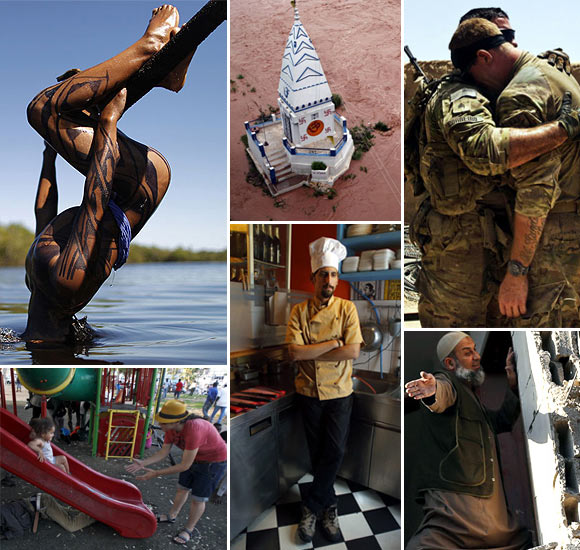
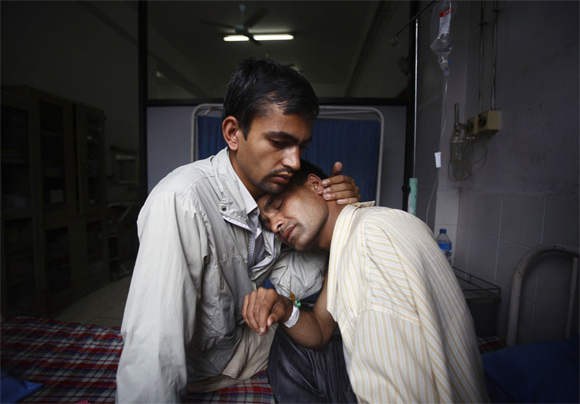
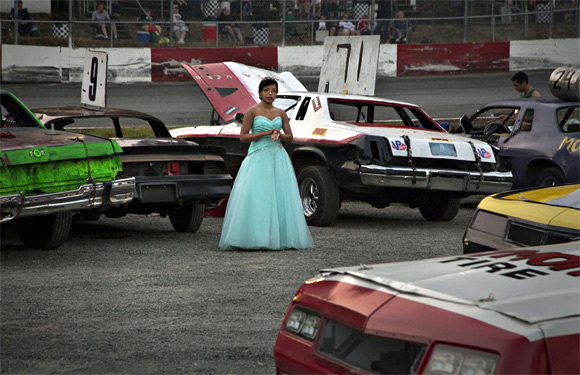
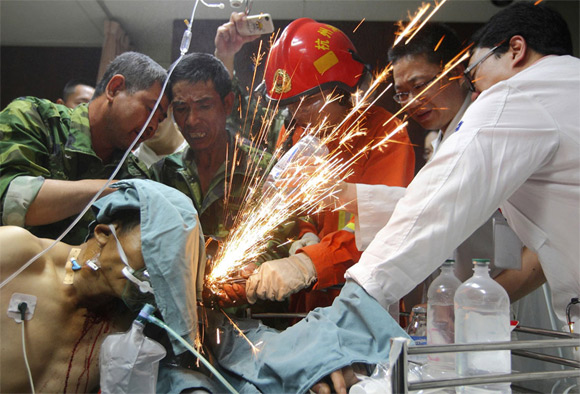
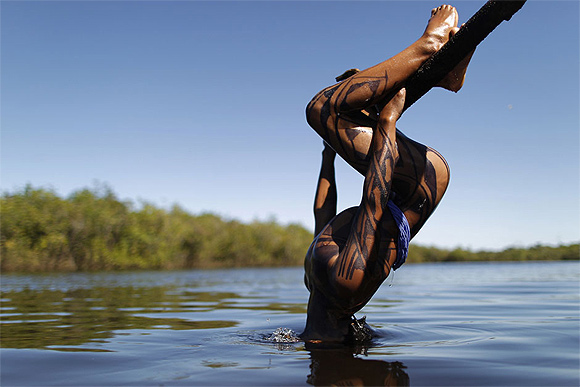


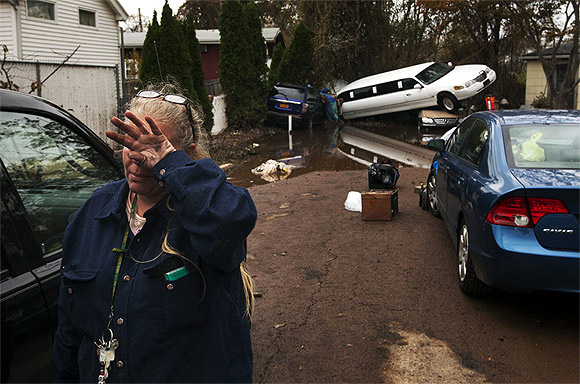
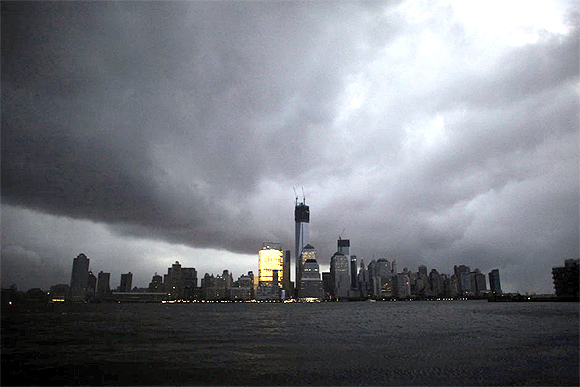
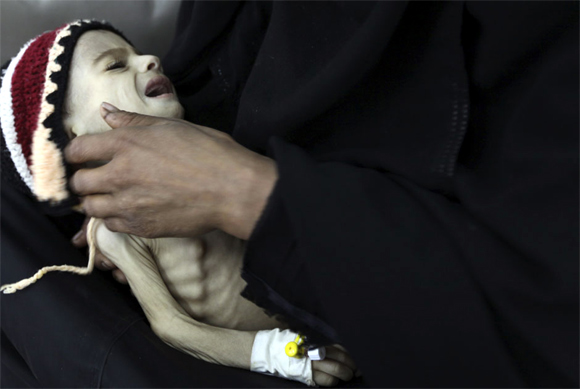
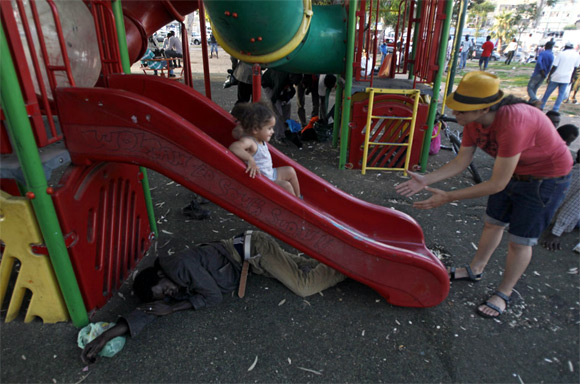


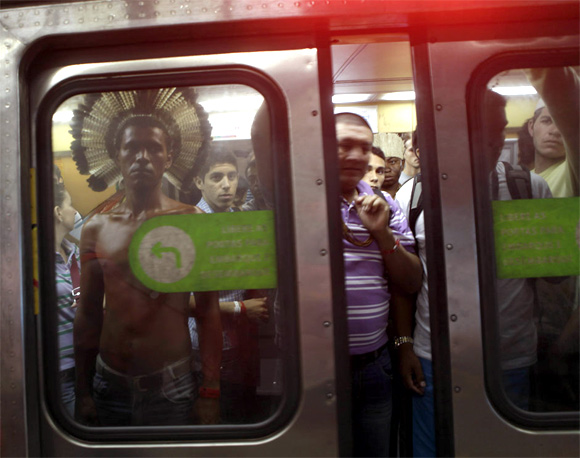


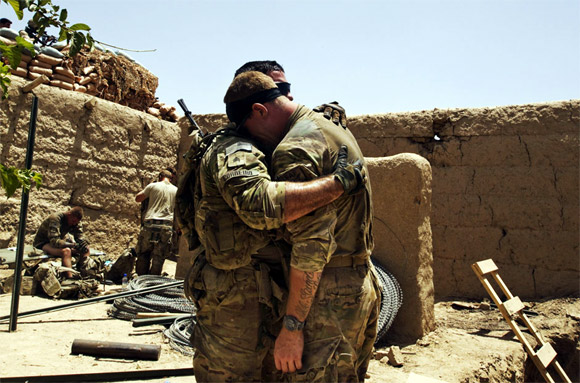
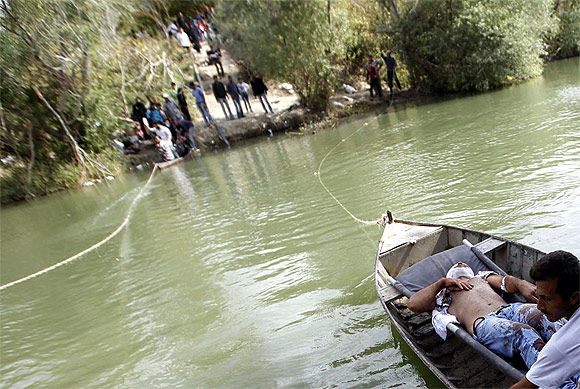

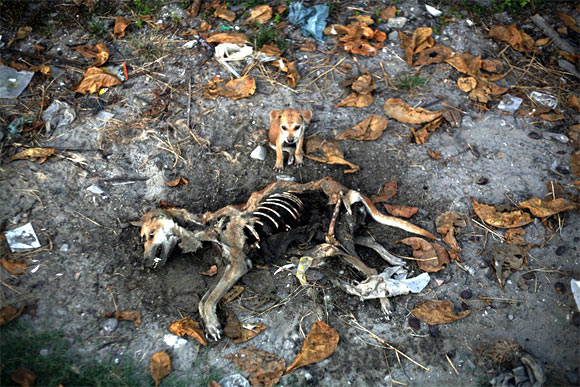
article